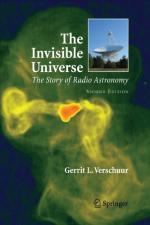|
This section contains 961 words (approx. 4 pages at 300 words per page) |

|
By measuring regions of the electromagnetic spectrum not available to optical astronomers, radio astronomy effectively extends the range of astronomical observation. During the twentieth century, radio astronomy advanced to become one of the most productive means of astronomical research. Moreover, the development and success of radio astronomy spurred astronomers to devise new instrumentation designed to investigate other regions of the Cosmic electromagnetic spectrum.
In the nineteenth century Scottish physicist James Clerk Maxwell developed a set of equations describing electromagnetic phenomena. Using Maxwell's equations, in 1988 German physicist Henrich Rudolph Hertz demonstrated the existence of radio waves as a portion of the electromagnetic spectrum. In separate experiments conducted in the 1890s, American inventor Thomas Edison and British physicist Sir Oliver Lodge unsuccessfully attempted to detect solar radio activity.
In 1932, while performing an experiment to locate sources of static interference vexing radio communication systems, American engineer Karl Jansky (1905-...
|
This section contains 961 words (approx. 4 pages at 300 words per page) |

|


